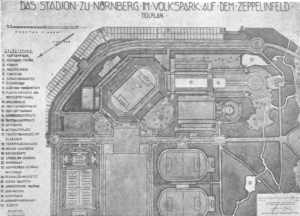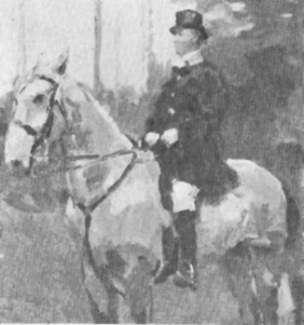Olympic Art Competition
| Art Competitions
In order to act as much as possible in the spirit and in keeping with the intentions of the founder and Honorary Chairman of the Olympic Games, Baron PIERRE DE COUBERTIN, who has wholeheartedly promoted and propagated the unity of SPORT AND ART with the greatest fervour, the Committee was of opinion that the organisation of the Art Contests (Concours d’Art) which, according to the General Regulations, form a component part of the programme, should be treated with much care. To assure the special success of the Art Contests, an Art Section was created, and Mr. C. W. H. BAARD, director of the Municipal Museum at Amsterdam, acted as Chairman. As Mr. BAARD’S time was largely taken up by his post in the Municipal Museum, a collaborator had to be appointed who was capable of quite independent action in the actual work of setting up the whole organisation, and who, at the same time, could act as secretary of the Section. The selection was very difficult, for it was essential to find a man whose knowledge of art was combined with tact and adaptability in his intercourse with artists, while, in the first place, he could not be selected from among the creative artists, nor was he to be considered as an official. The Committee was very fortunate in its selection, as Mr. J. W. TEILLERS of the Hague expressed his willingness to undertake the function of secretary of this Section, and consequently assumed responsibility for the greater part of the voluminous work. The Committee is very much indebted to Mr. TEILLERS, because he took the organisation in hand with so much expert knowledge and with great application, and completed it to the satisfaction of all concerned. 
Opening of the Exhibition On July 12th 1928 the exhibition was opened in the presence of His Excellency Mr. M. A. M. WASZINK, Minister of Education, Arts and Science, Mr. TH. M. KETELAAR, representing the Amsterdam Municipal Council, members of the International Olympic Committee, members of the Dutch Olympic Committee and a large number of invited guests, who, after the opening ceremony had been performed, made a tour of the exhibition. Before giving a review of the results of the Art Contests, it may be mentioned that the exhibition comprised about 1150 works of art (appearing in the illustrated catalogue under 651 numbers), including about 450 architectural models, drawings and photographs, 255 sculptures, including about 80 medals and reliefs, and about 460 paintings, drawings and graphic works belonging to 18 countries. The sculptures of very large dimensions were exhibited in and around the Stadium, thereby contributing to the adornment of this splendid sports ground. The contest for literature comprised 40 entries divided among 10 countries; 20 being lyric, 5 dramatic and 15 epic works. In the music section there were 22 entries from 9 countries; 5 vocal compositions, 9 orchestral and 8 for one instrument. The exhibition was very well attended, which will be clear from the fact that more than 10.000 persons visited it. This exhibition would undoubtedly have been still more important as an artistic event if the artists had not been restricted in the choice of subject, but in that case the mutual influencing of Sport and Art would not be attained, which is undeniably brought about by these regularly fouryearly shows. That the artistic value of the entries was of a high standard may be deduced from the fact that there were very important works of art which had been awarded prizes at former large and successful general exhibitions, which did not succeed in carrying off a prize now, while it was clearly apparent that the co-ordination aimed at between Sport and Art had been attained, as was especially pronounced in the architectural entries. At the same time it was proved that the groups of entries selected by commissions with expert knowledge of artistic matters or by expert official bodies yielded the best results, and that each branch of art was represented in the best possible way. Source document: Official Report 1928 Amsterdam, page 877 ff. |

The prizes were awarded as follows:
ARCHITECTURE
Architectural Designs:
| 1928 | 1st | Jan Wils | NED | Olympic Stadium in Amsterdam |
| 2nd | Ejnar Mindedal Rasmussen | DEN | Swimming pool in Ollerup | |
| 3rd | Jacques Georges Lambert | FRA | The Versailles Stadium |

Jan Wils / Stade d`Amsterdam
Designs for Town Planning:
| 1928 | 1st | Adolf Hensel | GER | Das Stadion zu Nürnberg |
| 2nd | Jacques Georges Lambert | FRA | The Versailles Stadium | |
| 3rd | Max Läuger | GER | The Hamburg City Park | |

Das Stadion zu Nürnberg, Adolf Hensel
SCULPTURE
Medals:
| 1928 | 1st | Edwin Grienauer | AUT | Medals |
| 2nd | Christiaan Hohannes van Hoef | NED | Olympic Medals | |
| 3rd | Edwin Scharff | GER | Plaque |

Medal, Edwin Grienauer
Sculpture:
| 1928 | 1st | Paul Landowski | FRA | Boxer |
| 2nd | Milo Martin | SUI | Athlete at Rest | |
| 3rd | Renée Sintenis | GER | Footballer |
Drawings and Water-Colors:
| 1928 | 1st | Jean Jacoby | LUX | Rugby |
| 2nd | Alexandre Virot | FRA | Football Player | |
| 3rd | Wladyslaw Skoczylas | POL | Archer |

Jean Jacoby / Rugby
Other Graphics Arts:
| 1928 | 1st | William Nicholson | GBR | Twelve branches of sport carved in wood |
| 2nd | Carl Moos | SUI | Poster "Athletics" | |
| 3rd | Max Feldbauer | GER | Mailcoach |
Paintings:
| 1928 | 1st | Isaäc Israels | NED | The Red Rider |
| 2nd | Laura Knight | GBR | Boxers | |
| 3rd | Walther Klemm | GER | Skating |

Isaäc Israels / Cavalier rouge
LITERATURE
Dramatic Works:
| 1928 | 1st | no prize was awarded | ||
| 2nd | Lauro Adolfo De Bossis | ITA | Icarus | |
| 3rd | no prize was awarded |
Epic Works:
| 1928 | 1st | Ferenc Mezö | HUN | History of the Olympic Games |
| 2nd | Ernst Weiß | GER | Boetius von Orlamünde | |
| 3rd | Carel Theodorus Scharten + | NED | The Fool in the Maremmen | |
| Margo Scharten-Antink |
Lyrics:
| 1928 | 1st | Kazimierz Wierzynski | POL | Olympic Laurels |
| 2nd | Rudolf Georg Binding | GER | Rider`s Instructions to his Lover | |
| 3rd | Christian Johannes Weltzer | DEN | Heroic Symphony |
Compositions for Orchestra of All Kinds:
| 1928 | 1st | no prize was awarded | ||
| 2nd | no prize was awarded | |||
| 3rd | Rudolph Hermann Simonsen | DEN | Symphony No. 2 "Hellas" |